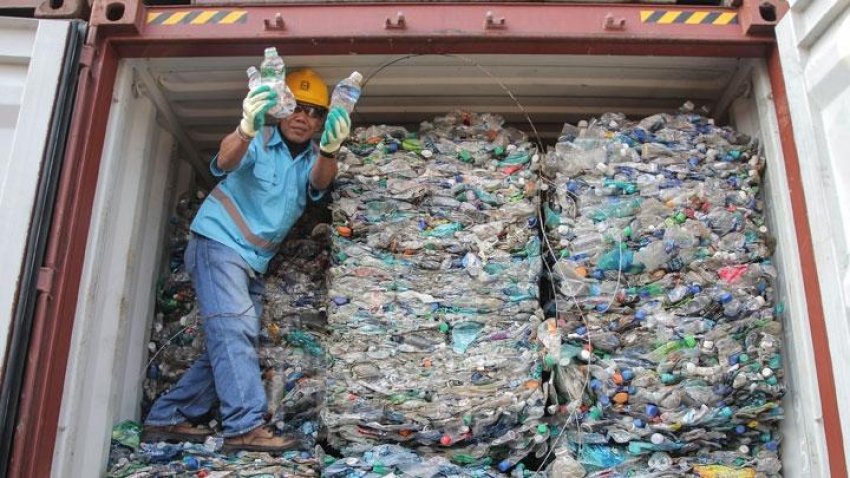
The federal government’s new recycling and waste bill shows that it has finally been forced to make changes by countries where we have dumped our toxic waste.
Federal environment minister Sussan Ley’s Recycling and Waste Reduction Bill 2020, introduced on August 27, aims to phase out the export of plastic, paper, glass and tyres. From 2006-2019, such exports amounted to as much as 4.44 megatonnes.
The bill shows that it is, and always has been, possible to adopt a responsible recycling plan and end this form of toxic colonialism. It will undoubtedly encourage recycling, but questions should be asked about why this has taken so long to happen.
Compared to other rich countries, Australia produces more waste and recycles less. In 2016, Australia exported 293,122 tonnes to China, making us the 8th biggest dumper globally. That year, 56.6% of our waste was exported.
Recycling rates have improved, but a part of that “recycling” happens in poorer South-East Asian countries where Australia dumps its waste. In July 2018, the ABC’s 7.30 Report showed waste from Australia is being burnt in villages, where people sort the rubbish by hand and breathe in the toxic fumes. Such “recycling” has caused many deaths.
Why has Australia been sending its waste overseas? In a nutshell, it comes down to a policy of putting profits before human health.
Sorting and recycling rates here are not competitive with those in South-East Asia, due to the extremely low wages, poor work conditions and little to no regulation. Also, as the production of new plastic is cheaper than recycling, manufacturers use the excuse that there is no incentive for them to use recycled materials.
But, China's decision not to import waste, combined with Australia’s rapidly increasing landfill rates, forced a rethink.
On December 31, 2017, China adopted its National Sword Policy, immediately ceasing the importation of recyclable material from overseas. This set off alarm bells here because governments had not planned for any sudden change, nor did they have adequate recycling facilities.
As a result, Australia diverted the majority of its waste to Indonesia, Malaysia, Thailand and Vietnam: over 2018-19 the amount of waste was greater than what was sent to China over 2017-18.
In April 2018, Australia made plans for 100% of waste to be recyclable, but made no plans to reduce exporting that waste.
From May 2018 to March 2019, many other countries followed China’s lead, including Malaysia and Thailand which restricted the dumping of plastic waste. Since then, shipping containers, including from Visy, have been sent back to Australia because they contained toxic waste.
In May 2019, 180 countries, including Australia met for the 14th Conference of Parties to the Basel Convention. Norway proposed a change to regulations to ensure that mixed, unrecyclable and contaminated plastic waste exports are counted as hazardous waste. This brought the regulations into line with the original convention idea that importers need to give consent to any hazardous waste exports being received.
While Australia helped bring the Basel Convention into force in 1992, it has still not ratified the 1995 amendment to completely shut down the export of hazardous waste.
In not ratifying the ban, Australia joins the United States, Canada, Japan, New Zealand, South Korea, Russia, India, Brazil and Mexico. However, as three quarters of participating countries did agree, the Basel Ban amendment did come into force in December. That means that all parties from the original 1992 convention must stop exporting hazardous waste.
It is clear that Australia has had to be pushed to start taking responsibility for its own waste. It has begun to plan for greater recycling, with the Council of Australian Governments agreeing on August 9 last year to set up a timetable to ban the export of waste plastic, paper, glass and tyres and build recycling infrastructure.
But, it was only after the federal government agreed to stop the export of mixed plastics on November 8 that federal, state and territory environment ministers agreed to a timetable to stop their export by no later than June 30, 2022.
The federal government estimates its new recycling and waste reduction plans will create 10,000 new jobs. It plans to spend $190 million.
Although there are plans, finally, to improve local recycling infrastructure, it should not be forgotten that Australia has never supported the ban on the export of hazardous waste, meaning that the fight to end toxic colonialism has not finished.